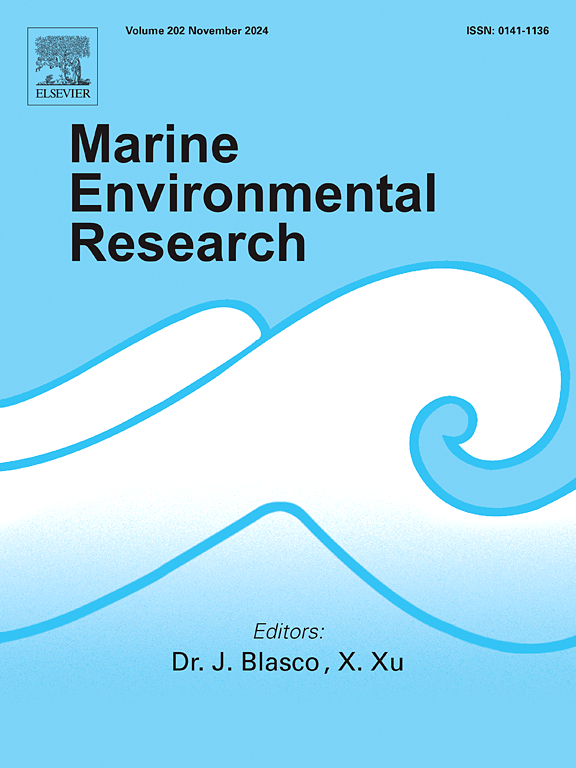Low oxygen in the open ocean: A case study of mild oxygen minimum zone (OMZ) in the Western Pacific
IF 3
3区 环境科学与生态学
Q2 ENVIRONMENTAL SCIENCES
引用次数: 0
Abstract
Marine hypoxia, exacerbated by global warming, has led to the expansion of oxygen minimum zone (OMZ) in the ocean. Based on investigations across four sections in the Tropical Western Pacific Ocean, this study examines the characteristics and key controlling factors of OMZ in the region, with a focus on the interactions between organic matter and hypoxia, using particulate organic carbon (POC) as an example. Results indicate that OMZ are located at depths of 550–1380 m, 290–1120 m, 740–1380 m, and 730–1380 m across the four sections, with a dissolved oxygen threshold of 3.2 mg/L. Seawater stratification plays a crucial role in defining OMZ distribution, with OMZ upper boundaries occurring below the halocline and minimum oxygen levels found beneath the thermocline. Ocean circulation facilitates the westward expansion of the intense OMZ from the Eastern Pacific, influencing its extent in the study area. OMZ enhance the transport of POC to the deep sea, with decomposition rates within OMZ significantly lower than in overlying waters, 17.7 %, 3.1 %, 3.7 %, and 13.6 % in sections A, B, C, and D, respectively. These findings provide valuable insights into the fundamental characteristics, drivers, and biogeochemical implications of OMZ in the Western Pacific.

求助全文
约1分钟内获得全文
求助全文
来源期刊

Marine environmental research
环境科学-毒理学
CiteScore
5.90
自引率
3.00%
发文量
217
审稿时长
46 days
期刊介绍:
Marine Environmental Research publishes original research papers on chemical, physical, and biological interactions in the oceans and coastal waters. The journal serves as a forum for new information on biology, chemistry, and toxicology and syntheses that advance understanding of marine environmental processes.
Submission of multidisciplinary studies is encouraged. Studies that utilize experimental approaches to clarify the roles of anthropogenic and natural causes of changes in marine ecosystems are especially welcome, as are those studies that represent new developments of a theoretical or conceptual aspect of marine science. All papers published in this journal are reviewed by qualified peers prior to acceptance and publication. Examples of topics considered to be appropriate for the journal include, but are not limited to, the following:
– The extent, persistence, and consequences of change and the recovery from such change in natural marine systems
– The biochemical, physiological, and ecological consequences of contaminants to marine organisms and ecosystems
– The biogeochemistry of naturally occurring and anthropogenic substances
– Models that describe and predict the above processes
– Monitoring studies, to the extent that their results provide new information on functional processes
– Methodological papers describing improved quantitative techniques for the marine sciences.
 求助内容:
求助内容: 应助结果提醒方式:
应助结果提醒方式:


